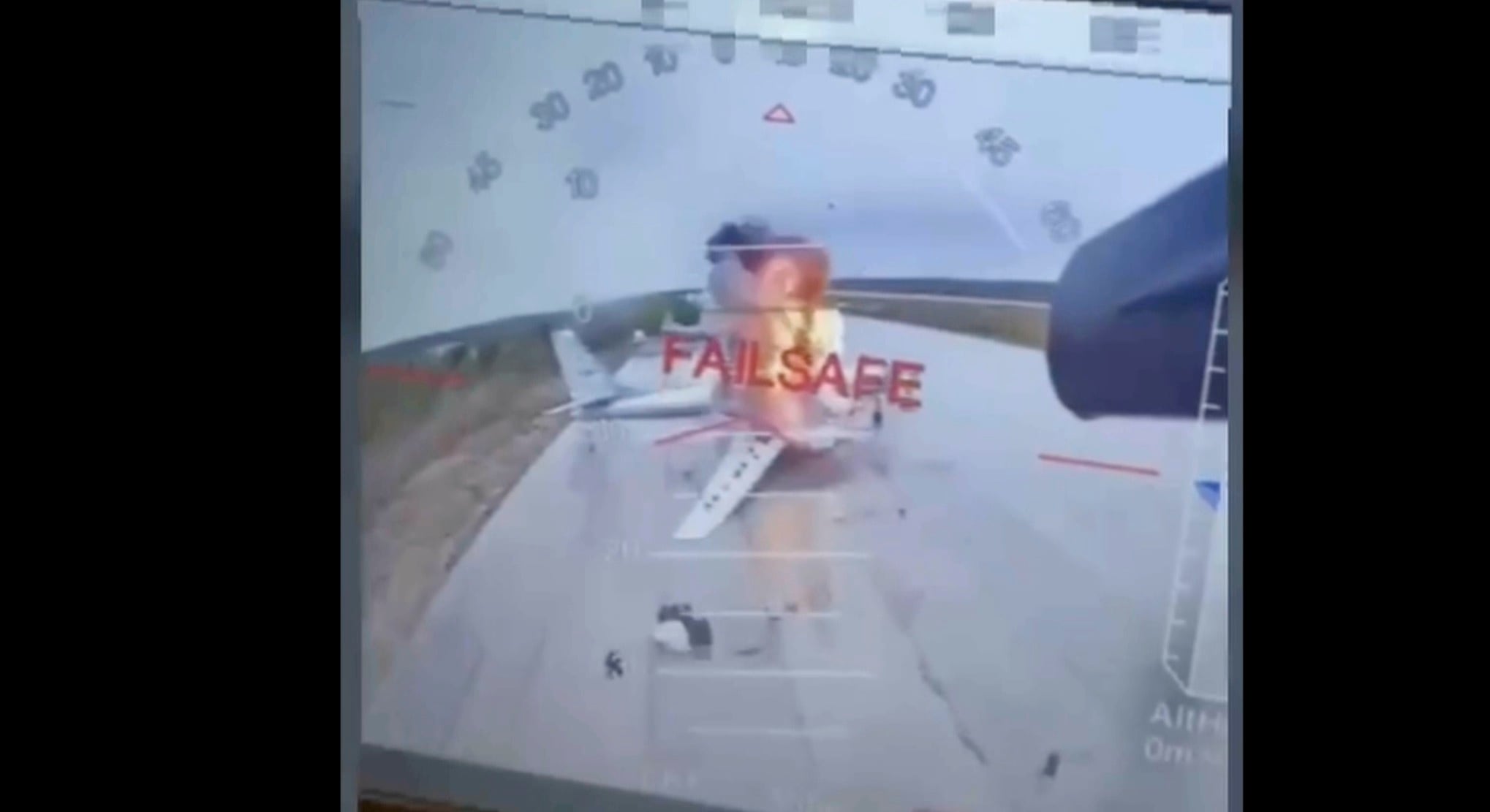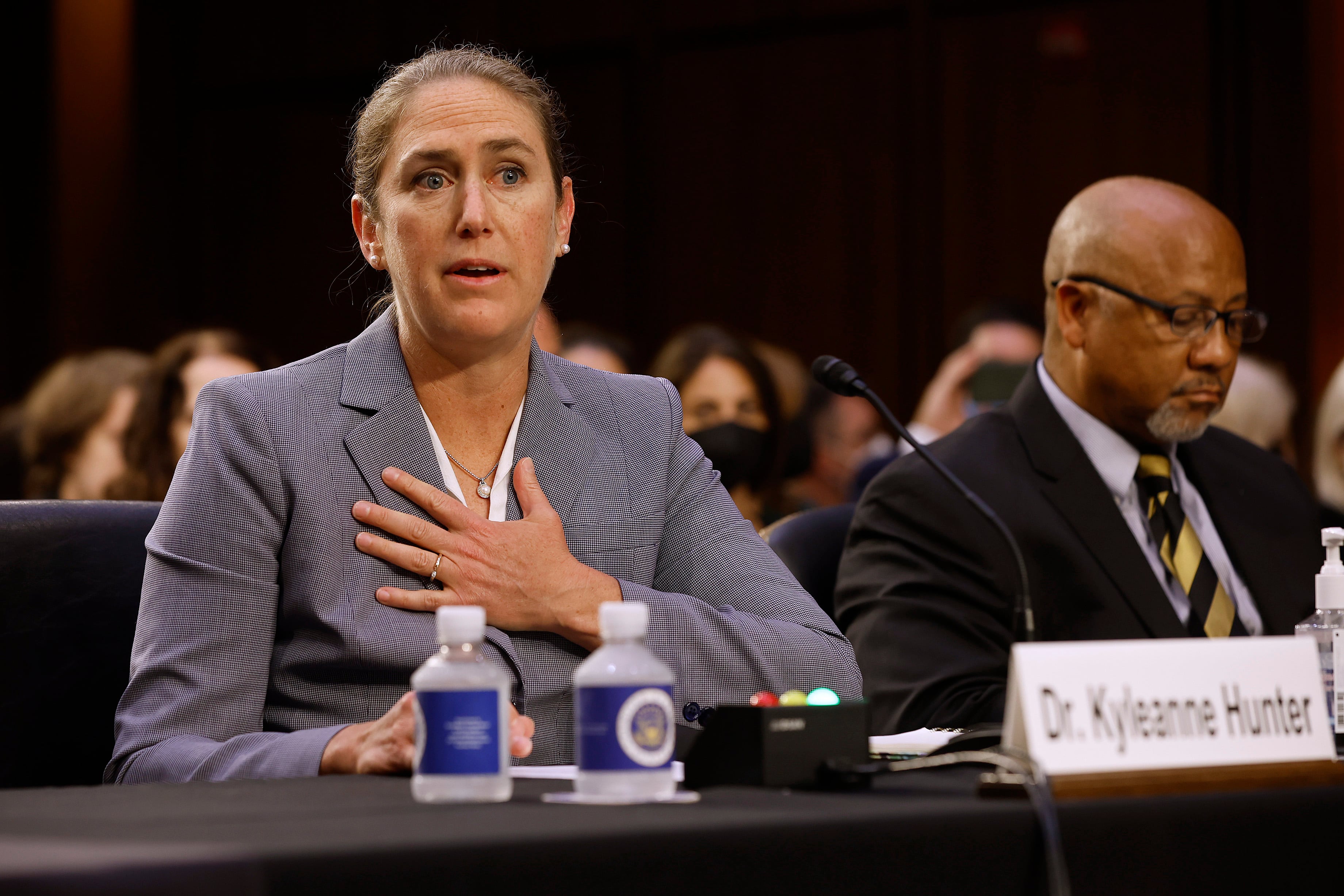Fifteen Marines and a Navy corpsman were killed Monday when their KC-130T from a reserve unit in New York crashed in a field in Mississippi, Marine Corps officials said.
It was the deadliest crash for the Marines in more than a decade. The FBI is investigating the cause.
The crew included six Marine Raiders and a sailor from the 2nd Marine Raider Battalion at Camp Lejeune, according to a statement from Marine Corps Special Operations Command Tuesday.
The KC-130T and nine other crew members were from Marine Aerial Refueling and Transport Squadron 452, officials said.
The aircraft took off from Marine Corps Air Station Cherry Point, North Carolina, on a mission to Naval Air Field El Centro, California, according to a Marine Corps Forces Reserve statement on Tuesday.
"On behalf of the entire Marine Corps, I want to express my deepest condolences to the families of those killed in the aircraft mishap yesterday afternoon in Mississippi," Commandant Gen. Robert Neller said in a statement Tuesday. "Our focus remains on notifying and supporting the families while we conduct a thorough investigation into the cause of this tragedy."
The names of the 16 service members on board have not been publicly released, pending next of kin notification.
The plane went down about 4 p.m. in LeFlore County in the Mississippi Delta. Federal Aviation Administration officials contacted the Marine Corps after it disappeared from radar.
"Equipment on board included various small arms ammunition and personal weapons," MARFORRES announced in a news release. "An Explosive Ordnance Disposal team is at the scene as a precaution in the interest of safety."
The aircraft's reserve squadron is based at Stewart Air National Guard Base, about 60 miles north of New York City. VMGR-452 flies KC-130s that are modified to provide aerial refueling capabilities.
"On behalf of the Marine Corps Reserve, I extend my deepest sympathies to the loved ones of those who perished in last night's tragedy," Lt. Gen. Rex C. McMillian, commander of MARFORRRES, said in a Tuesday statement. "The Marines and sailor involved in this incident were among our finest. They dedicated their lives to our core values of honor, courage and commitment. They will never be forgotten."
Monday's crash appears to be the deadliest Marine aviation mishap since January 2005, when a CH-53E Super Stallion helicopter crashed in western Iraq, killing 30 Marines and one sailor. More recently, 12 Marines were killed in January 2016 when two CH-53Es collided over Hawaii.
LeFlore County Emergency Management Agency Director Frank Randle told reporters at a late briefing that 16 bodies had been recovered after the KC-130 spiraled into the ground about 85 miles north of Jackson in the Mississippi Delta.
The crash comes at a time of intense concern about the readiness and condition of the Corps' aviation fleet. Top Marine officials say the Corps has suffered a severe lack of experienced maintainers in recent years.
The Naval Safety Center has recorded seven Class A mishaps for Marine aviation since October. Class A mishaps involve death or damage of more than $2 million. One of those mishaps was fatal: On Dec. 7, Capt. Jake Frederick was killed when his F/A-18C crashed off Japan.
Two Reserve maintainers were severely burned on June 25 after flammable material in a drip pan caught fire, according to the Naval Safety Center. MARFORRES officials have declined to release the maintainers' medical conditions.
While the cause of Monday's crash has yet to be determined, in the past decade the Marine Corps has struggled mightily to maintain aircraft readiness in the face of austere budgets and an at-times crushing operational tempo.
The number of Marine Corps aircraft ready to fly on any given day has plummeted in the past seven years, with mission-capable rates for all but one of the Marine Corps' 12 fixed-wing, rotary and tiltrotor airframes have fallen since the end of fiscal 2009.
Only 41 percent, or 439, of the Marine Corps's 1,065 aircraft were flyable as of Dec. 31, Lt. Gen. Jon Davis, then-deputy commandant for aviation, said in February. Davis said his target should be 589 flyable aircraft.
The Pentagon's Inspector General notified Marine Corps Commandant Robert Neller and Naval Inspector General Vice Adm. Herman Shelanski in October that it would audit the Corps' struggling aviation readiness.
While officials stress that the number of flyable aircraft fluctuates daily, the downward trends have caused alarm.
Navy Times senior reporter Geoff Ziezulewicz and The Associated Press contributed to this story
Mackenzie Wolf is an editorial intern for Military Times.





